Spaghetti Junction picture mystery solved as workers identified
- Published
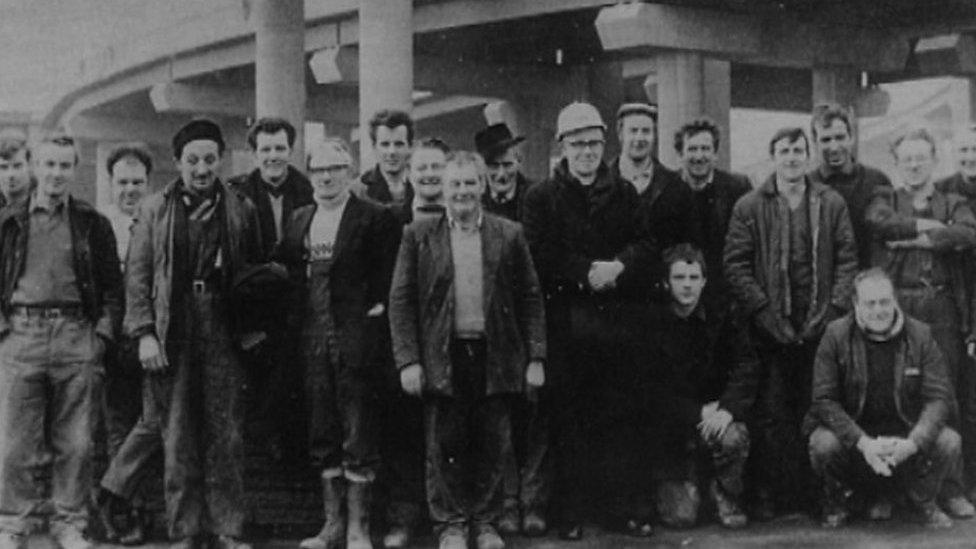
Spaghetti Junction workers in 1972
An appeal to identify Irish construction workers from a photograph at one of England's best-known motorway junctions has ended in success.
The Birmingham Irish Association has identified all 24 men who worked on Spaghetti Junction in 1972.
"We had people contacting us about the Spaghetti Junction photograph the world over, from Australia and America," said Yvonne Price, behind the project.
Their stories are now being told in an exhibition in the city.
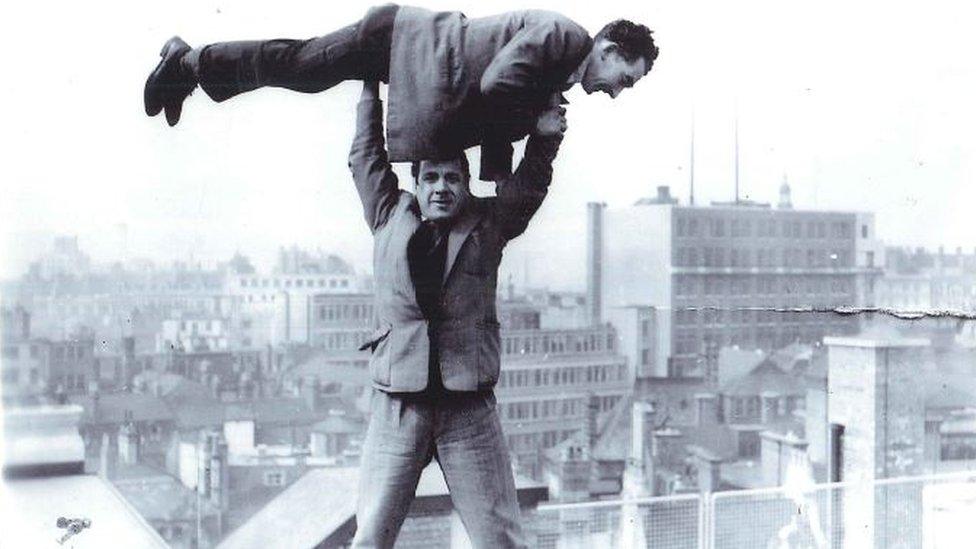
Fabian Cowan is lifted aloft by his friend Larry Miller during work on the Marks and Spencer building in Birmingham
Thousands of Irish immigrants arrived in Birmingham in the 1940s, 50s, and, 60s.
As the city was undergoing a huge post-war transformation, they worked on some of its most iconic structures, including the infamous M6 junction and the city centre Rotunda.
"The stories we found were very moving," said Ms Price.
"People left home as 15-year-olds, living in bedsits and sharing beds, to make a better life for themselves. It was very, very hard but you don't hear about them complaining."
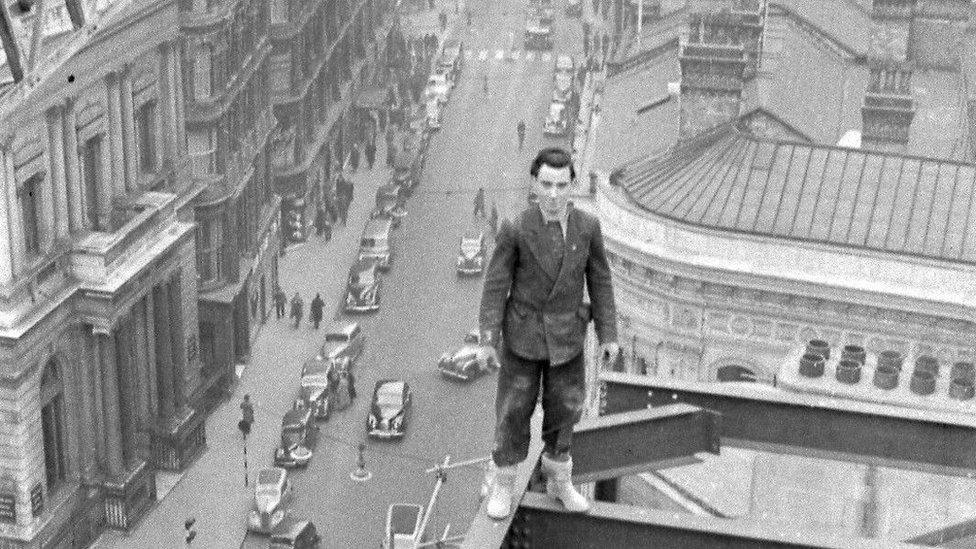
The exhibition showcases photographs from the 1950s
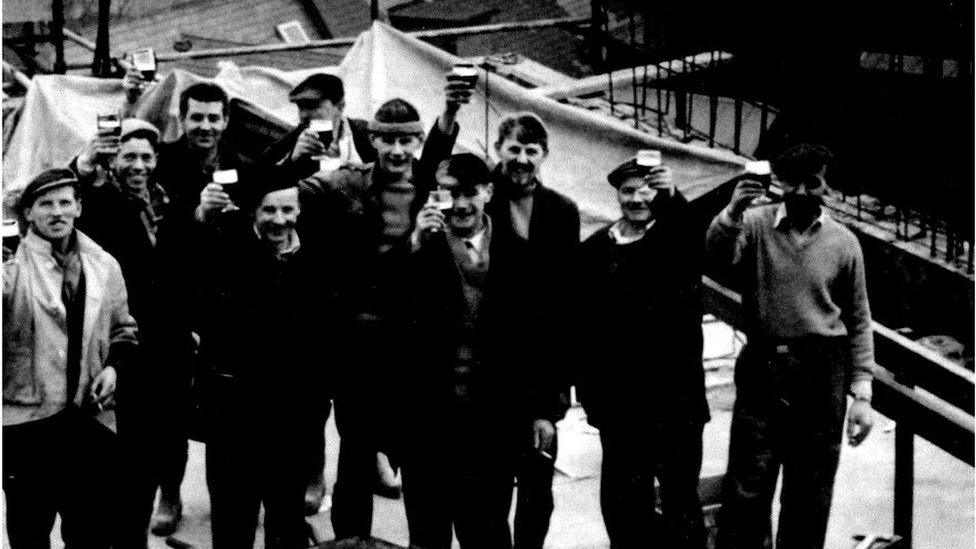
Workers toasting the end of a project - the foreman would take a barrel of stout up to the roof to celebrate completion with the staff
The appeal led to the discovery of many photographs and artefacts from the time.
The family of one worker Fabian Cowan, who was also a keen photographer, found a collection of his pictures in a tin in his shed, after he died in 2004.
They show him and his friends larking about, perched precariously on top of lofty building sites with the city behind them.
His daughter, Carmel Girling, said: "He was trying to emulate the famous pictures of the construction workers on the Empire State Building in New York.
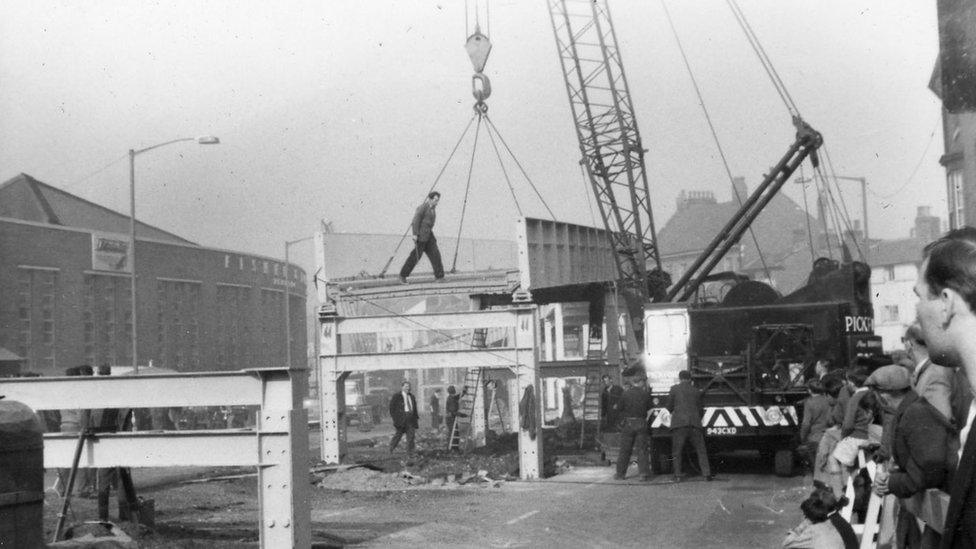
Erecting the flyover at Bordesley in October 1961, days before it opened to traffic
"I think they would have made health and safety go grey if they'd been around then.
"I hope what the exhibition does achieve is that people will remember the contribution these men made."
The exhibition - We Built This City - showcases a host of other material.
It runs at the Birmingham Museum and Art Gallery until May 28.

Pictured on the rooftops
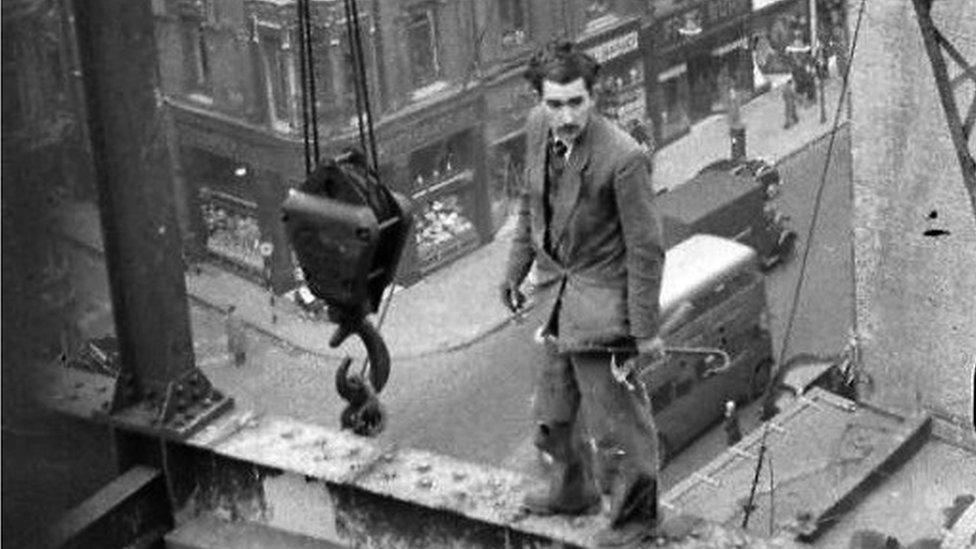
Fabian Cowan in his "work clothes" - a tweed jacket with a nail for a button to keep it closed
Fabian Cowan was born in Dublin in 1927, the youngest of nine children.
His father was a cabinet maker, who is thought to have worked on the Titanic, and Fabian had a good education.
He arrived in England in 1952 with a brown paper bag containing his clothes and little else.
With no money, he slept rough in New Street Station, Birmingham, before he got his first building job.
Over the years, he worked on several landmarks, including Marks and Spencer, Frankley Beeches reservoir and Alexander Stadium in Perry Barr.
Although he had little else he managed to get hold of a camera - his family believe he may have bought it with one of his first pay packets - and took and developed pictures from the rooftops of Birmingham.
- Published11 November 2016
